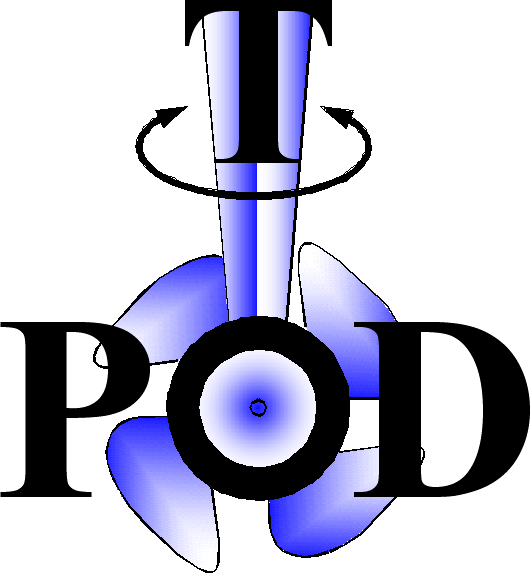


|
|
|
The Applied Research Laboratory of Penn State University (ARL‑Penn State) has developed unique design, analysis and testing capabilities for the continued development of pod propulsion. In conjunction with industry, ARL‑Penn State has performed hydrodynamic designs of novel, high efficiency pod propulsors using rim-drive permanent magnet and super-conducting motor technology. These designs were performed with ARL‑Penn Stateís proprietary design codes and CFD analysis based on the turbomachinery design techniques employed in the aviation and hydraulics industries. The foundation for these advanced concepts is ARL‑Penn Stateís demonstrated capability in leading hydrodynamic and hydro-acoustic research and design of submersible vehicle propulsors. These torque dense, high speed vehicles require quiet, high efficiency propulsors that operate at low cavitation indexes. While surface ship speed goals are decidedly lower, the efficiency and cavitation goals are similar. As a case in point, the hydrodynamic design techniques employed by ARL‑Penn State in developing Electric Boat Corporationís Commercial Rim Driven Propulsor will be discussed. In addition, the scaling methodology used in projecting full-scale efficiency and self-propulsion advance ratio from model-scale tow tank test data will be described.
High torque capacity dynamometry is the key to model testing these configurations at Reynolds numbers exceeding 5x105~106. Various combinations of frequency controlled, inverter driven, synchronous AC motors provide a torque capacity to 475 Nm (350 ft-lbs) enabling the testing of 0.3~0.4m diameter propulsors at test section velocities exceeding 10.5 m/s in the Garfield Thomas Water Tunnel.. This world-class cavitation research facility, with a 4.26 m long, 1.22 m diameter test section, provides generous visual access and precise test section pressure and air content control for the modeling and viewing of extreme operating conditions. Various tunnel wall liners, hull forms and wake/boundary layer generating appendages are adapted to simulate actual propulsor-hull configurations. Beyond shaft and pod body steady-state and unsteady force measurements, LDV and PIV laser velocimetry systems are available for non-intrusive flow field measurements. |
|
Send mail to
tpod@ncl.ac.uk with
questions or comments about this web site.
|